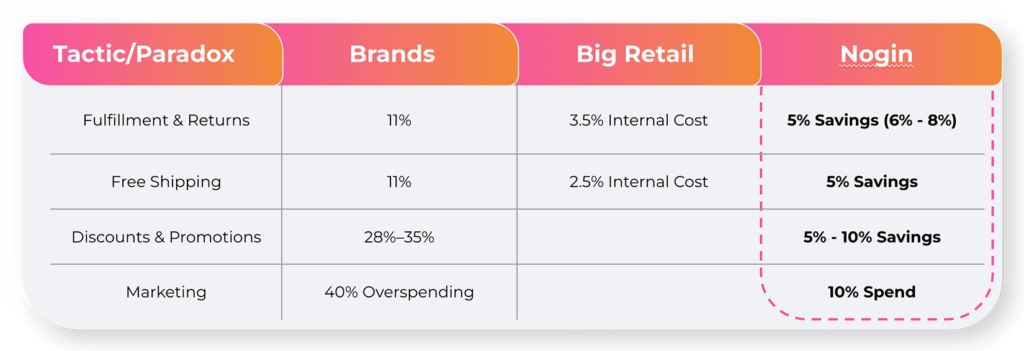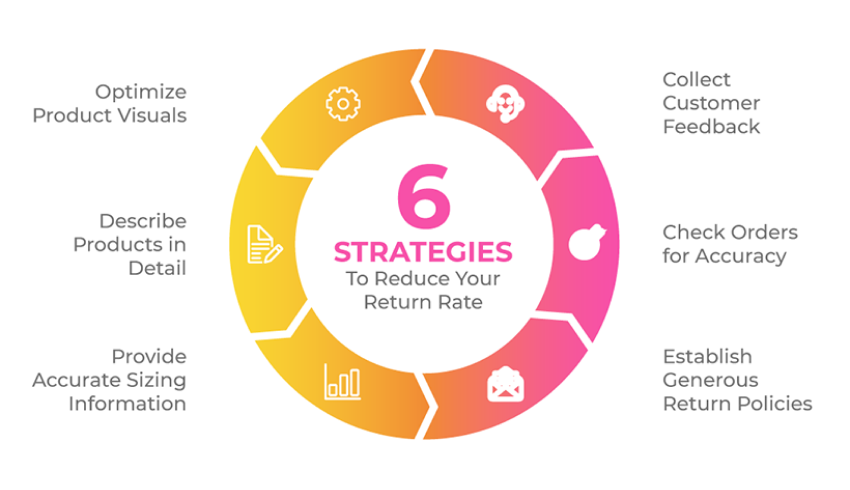Did you know that one out of every three products purchased online will be returned? And in luxury fashion ecommerce, the return rate can be even higher.
While some brands chalk up these unfortunate statistics to consumer behaviors that are outside of their control, the reality is that 67% of the time these returns are actually the retailer’s fault. Some informative ecommerce return statistics show:
- In 23% of returns, the customer had received the wrong product
- In 22% of returns, the product was different in appearance than advertised
- In 20% of returns, the customer had received a damaged or defective item
High return rates can attack profit margins, affect customer retention, and impact overall company growth—and major ecommerce brands are responding in a variety of innovative ways, including ecommerce third-party fulfillment.
Amazon has begun closing the customer accounts of serial-returners. Other companies, such as Stitch Fix, have adopted a try-before-you-buy model that offers a monetary incentive to consumers who keep items. Still, others are offering promotions only to certain customers based on their prior return-risk or adopting extended return policies to increase overall growth and improve customer retention.
With online sales now firmly established as a large segment of fashion commerce, and free shipping—both ways—becoming standard practice, the cost of returns has become a significant problem.
Here are some of our top tips to help reduce ecommerce returns, increase profit margins, and satisfy more online shoppers:
1. Optimize Product Visuals
High-quality photography can help bridge the gap between product reality and customer expectations. Photos should display multiple product angles, allow 360-degree views, offer a zoom feature, show lifestyle images, and, when appropriate, play product videos. Images for all product color options and other variations should also be provided. Along with professional photography, consider embedding an Instagram gallery onto your site. This element will seamlessly show your products being worn or used by a wider variety of consumers. Check out our guide on how to do ecommerce product photography.
2. Describe Products in Detail
Customers can’t touch or feel online products, so written product descriptions matter. A well-written one will allow the customer to virtually experience the product through all five senses, as well as present all applicable product details—such as materials used, special care instructions, and other reasons why your product is unique. Learn other product page optimization strategies and product listing strategies to improve your online experience.
3. Provide Accurate Sizing Information
Returns due to poor fit are an inherent problem in fashion ecommerce. Because customers can’t try on apparel before ordering, it is very important to calculate sizes accurately and consistently, along with providing measurements and brand-specific size charts on your site. Some companies now offer calculators that allow customers to type in their height and weight for best size suggestions; AI fitting assistants are another increasingly common option. By providing enough pre-purchase sizing information, a customer can confidently order a single size that will fit well—instead of ordering multiple different sizes and styles, then returning all but the ones they like best (In the luxury space, 51% of shoppers do this, a practice known as “bracketing.”). Read our blog featuring Gaby Haffter, Director of Buying, Merchandising, and Planning in Brand Management at Nogin, on essential ecommerce merchandising tips.
4. Collect Customer Feedback
Gather information about why customers are returning your products on return forms. Read online reviews. By taking the time to understand what is prompting returns, you can then address those issues by taking appropriate action: add more product views, write improved descriptions, correct size discrepancies, etc. Check out some of our go-to guides below to improve customer satisfaction:
- How to Create Positive Customer Experiences
- Benefits of Customer Segmentation
- Customer Segmentation Strategies
5. Check Orders for Accuracy
Placing internal measures to ensure the correct items are being shipped out initially is well worth the time investment. This will ultimately prevent lost sales, negative customer experiences, extra shipping costs, liquidated products, and time spent processing returns and exchanges. This is also the right time to confirm that all items are shipped in packaging to prevent potential damage. EDI software integration will help improve your shipping process and learn about other ways to overcome common ecommerce fulfillment challenges.
6. Establish Generous Return Policies
Establish generous return policies. While this may seem counter-intuitive, return rates actually decrease when there’s no urgency to return a product. This may be related to customers growing attached to these items that they keep around longer. Zappos is a good example of a brand that has successfully embraced this model by offering a 365-day return policy.
It’s no secret that hassle-free returns and exchanges encourage consumers to buy from certain brands and improve the overall customer experience. 95% of customers will shop at a store again that offers easy returns. You can keep this process customer-friendly by including a prepaid address label or envelope with shipped items and allowing returns at retail locations.
Need Help Reducing Your eCommerce Return Rate?

While there will probably always be customers who take advantage of generous return policies, the bottom line is that the majority of customers prefer not to have to deal with returns. Connect with Nogin and learn how we can help your brand implement strategies to decrease high return rates—and, instead, increase profits.
Best of all, our turn-key solution will allow you to let the experts handle your ecommerce technology, marketing, and all the other moving parts of your ecommerce business so you can focus on building your incredible brand. Our headless enterprise technology plugs into Shopify Plus, supercharging it with market-leading functionality that outperforms against legacy enterprise platforms. Migrate to an enterprise level with no upfront costs in less than eight weeks! We also have our own fulfillment center that will allow you to ship your products cheaper and faster while lowering operating costs, including return expenses!  Here are some of the other main benefits you can expect migrating to Nogin’s Intelligent Commerce solution:
Here are some of the other main benefits you can expect migrating to Nogin’s Intelligent Commerce solution:
- Our headless ecommerce solution features AI-powered customer segmentation, algorithmic merchandising, and smart promotion optimization to enhance your customers’ online shopping experience with personalization tactics that convert.
- We can handle multiple frontends and multiple backends.
- Access 40 enterprise-level tools and features that improve conversions and lower marketing spending, shipping, and returns.
- Replatform to a superior enterprise platform without any fees and go live in just 6 weeks.
- Access a comprehensive technology stack and pre-integrated frontend theme called Luminate, which includes the best Shopify apps along with partner integrations and exclusive features developed specifically for Intelligent Commerce. Our dedicated site optimizers are constantly working to improve each application, leveraging tactics gained from managing over 150 brands and $1 billion in total gross merchandise value (GMV) over the past decade.
- True global enterprise ecommerce to reach and convert international customers.
- Plug into our enterprise ecommerce platform solution with NO upfront costs!
Nogin is a different approach to enterprise ecommerce, and the results speak for themselves:
- Conversion rates improve an average of 40% on our platform.
- Marketing spend efficiency increases 30% with our CDP.
- Brands grow 40% on average in their first year after switching to Intelligent Commerce.
If you want to recession-proof your business and instantly become more profitable, it starts with a smarter approach. Learn more about the research and data behind a Commerce-as-a-Service business model and download the Coresight Research Reports below, or contact us today:


